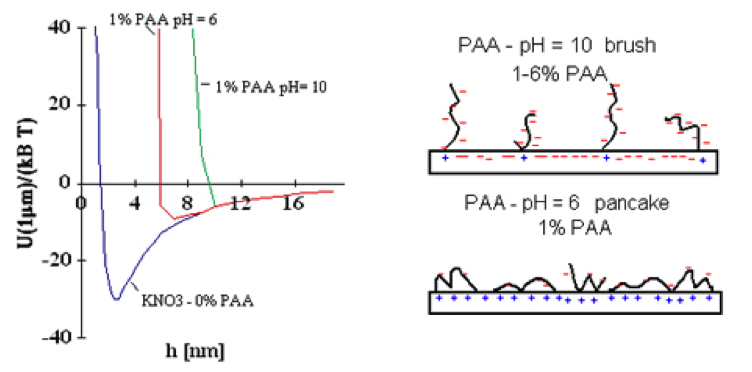Colloidal processing and Suspension rheology
The quest to produce fully dense ceramics for transparent aluminas or dense nanostructured ceramics have received much attention over the recent years because of the promise of materials with new and enhanced properties.
One of the main difficulties in realizing the promise of new ceramics is the difficulty of processing fine or ultrafine (nanosized) powders and producing fully dense components. Powder agglomeration and the resulting inhomogeneous powder packing during green body fabrication is one of the main problems hindering the production of defect free and fully dense components. Further when trying to achieve full density, grain growth out of the nanometer regime (<100 nm) or 200-300nm range is often difficult to avoid.
Stabilized colloidal suspensions (e.g. electrostatic and steric stabilization) combined with gentle rolling[1] or energetic attrition milling [2]have been shown to be efficient in achieving defect free green bodies. The use of interparticle force modeling to predict colloidal stability is also a key aspect of nanoceramic processing and is carried out with in-house freeware [2] (Colloidal stability & HAMAKER 2).

Interparticle potential predictions and effect of pH on PAA adsorption and steric repulsion (colloidal stability) for nanosized gamma aluminas [2]
Learn more by reading about “Suspension Rheology” : click here.
References :
1. M. Stuer and P. Bowen, “Yield stress modelling of doped alumina suspensions for applications in freeze granulation: towards dry pressed transparent ceramics” Advances in Applied Ceramics 111(5/6) 254-261, 2012 DOI 10.1179/1743676111Y.0000000061
2. Powder Technology 157 (2005) 100-107
3. U. Aschauer, O. Burgos-Montes, R. Moreno, P. Bowen, “Hamaker 2: A toolkit for the calculation of particle interactions and suspension stability and its application to mullite synthesis by colloidal method”. J Dispersion Science Technology, 32(4), (2011), 470 – 479. (http://hamaker.epfl.ch)